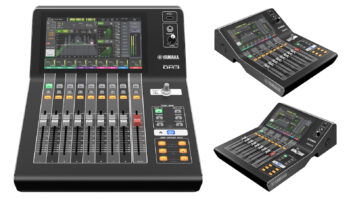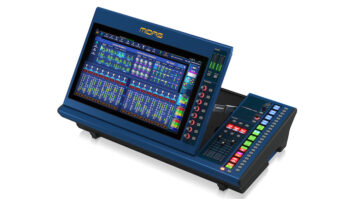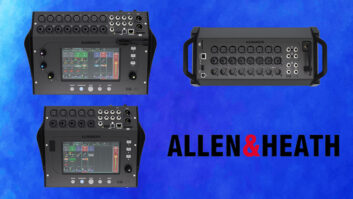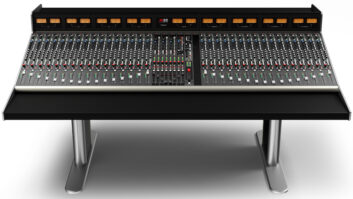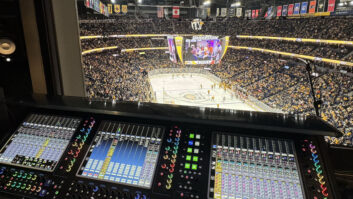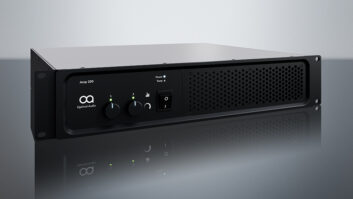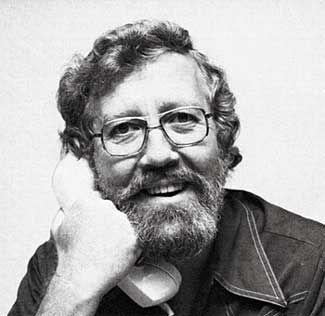
Besides popularizing the concept of the inline console, MCI founder Jeep Harned also built the first 24-track recorder and invented the tape autolocator.
MCI Electronics founder Grover C. “Jeep” Harned was a pro audio innovator, from the first 24-track recorder—a modified Ampex 300 in 1968—to the tape autolocator (1972) and commercializing the inline console. MCI unveiled a prototype of a 3-inch, 32-track analog deck in 1978, which never went into production, but showed harned’s willingness to try new ideas.
After earning a bachelor’s degree from Mississippi State University, Harned joined the U.S. Army, serving as electronics instructor. In 1955, he opened Music Center Inc., a store catering to the growing hi-fi market. Harned soon hooked up with Mack Emerman, who had just opened Criteria Studios and had trouble with the facility’s custom-built 16×3 console and ½-inch 3-track recorders. This “quick-fix” job lasted some 18 months, as Harned redesigned nearly all of Criteria’s gear.
During the early ‘60s, Harned built consoles, preamps and record electronics. In 1965 his business name became MCI Inc., and he focused on making replacement solid-state electronics for Ampex 350 recorders. Word about MCI spread: Harned got a call from Tom Hidley (then manager of TTG Recording Studios in Hollywood), asking if MCI could create 24-track electronics for an Ampex 300 that Hidley modified to handle 2-inch tape. That first 24-track went into service at TTG in 1968, creating a stir among competing studios and leading to a recording revolution. MCI showed its own recorders at AES 1971, and a year later, intro’d the concept of the autolocator.

With its inline design, MCI JH-400 put lots of mix inputs into a small space.
At the time, most studio consoles were custom designs, either created by the studio owners/engineers themselves or unique one-of-a-kind models made by small console companies. Based on the classic Henry Ford mass manufacturing method, Harned wanted use that “production” concept to build what were essentially off-the-shelf studio mixers. And rather than use the traditional “split” monitoring approach to mixers, MCI boards used an inline design. The credit for the first inline-style console designs actually goes to Dan Flickinger, who designed a number of custom mixers that put tape monitoring within the channel modules, but had track assignments in a separate section. However, the popularity of the modern inline console stems from Nashville audio dealer Dave Harrison (later founder of Harrison Consoles), who approached Harned with this new approach to console design.
Harned and MCI engineer Lutz Meyer helped Harrison refine the JH-400 (the “JH” stood for Jeep Harned). The standardized JH-400s were revolutionary: They were standardized “production” models, yet with offered choice of user options and incorporated Harris 911 IC op-amps, thus lowering costs and simplifying manufacturing. The first JH-416 models offered 24 inputs/outputs with quad panning/monitoring, 3-band EQ and P&G faders. Options included a 32-input version, VCA grouping, automation and switchable peak/VU meters. (Click here to download a vintage MCI JH-416 brochure.)
The JH-400 offered an affordable pro console to the burgeoning studio industry and five years later, a 1977 Billboard poll gave MCI the leading share (14.3 percent) among studios. That same year, MCI unveiled the updated JH-500 series, which offered a four-band EQ, more sends/returns and plasma VU displays.
Harned sold MCI to Sony in 1982 and retired. He will long be remembered as a pioneer who made significant advancements to the state of pro audio. Note: A Website dedicated to MCI history recently appeared. Visit it at www.mcirecording.com.

